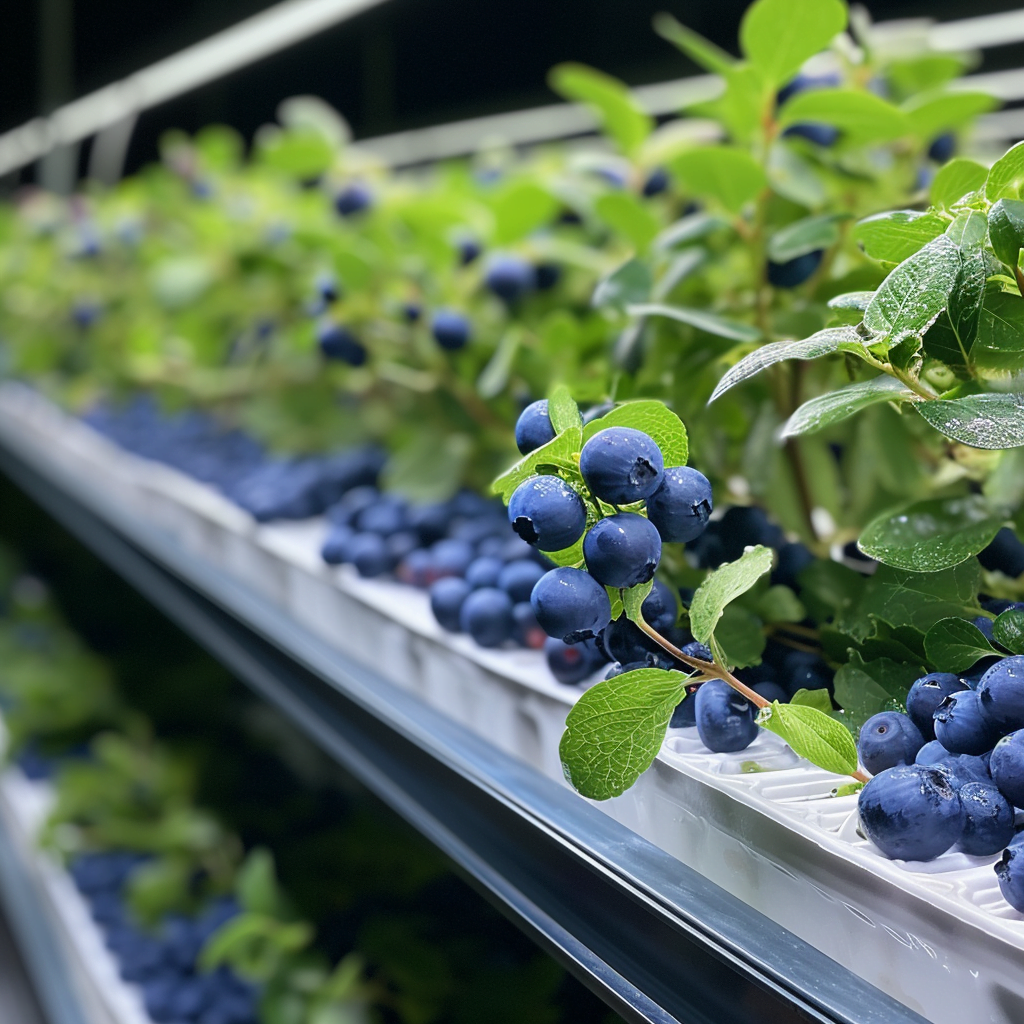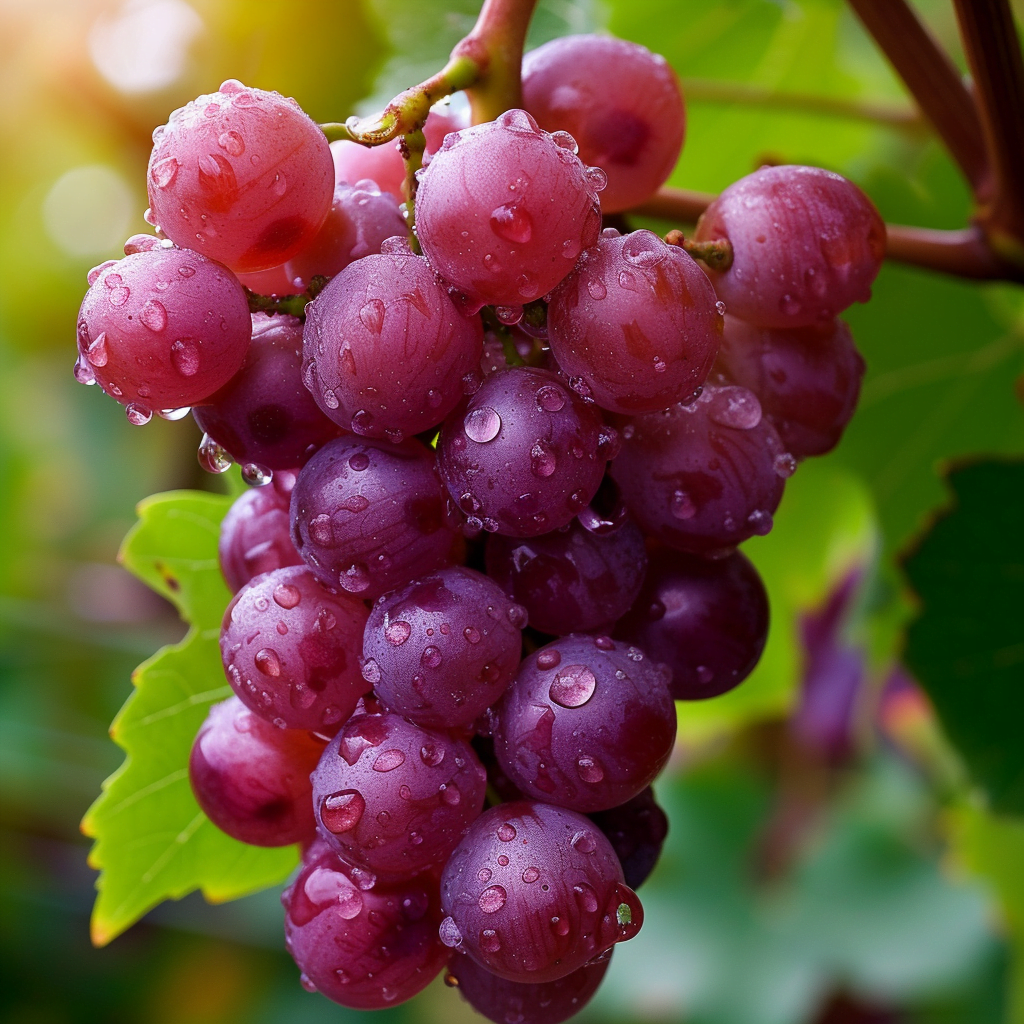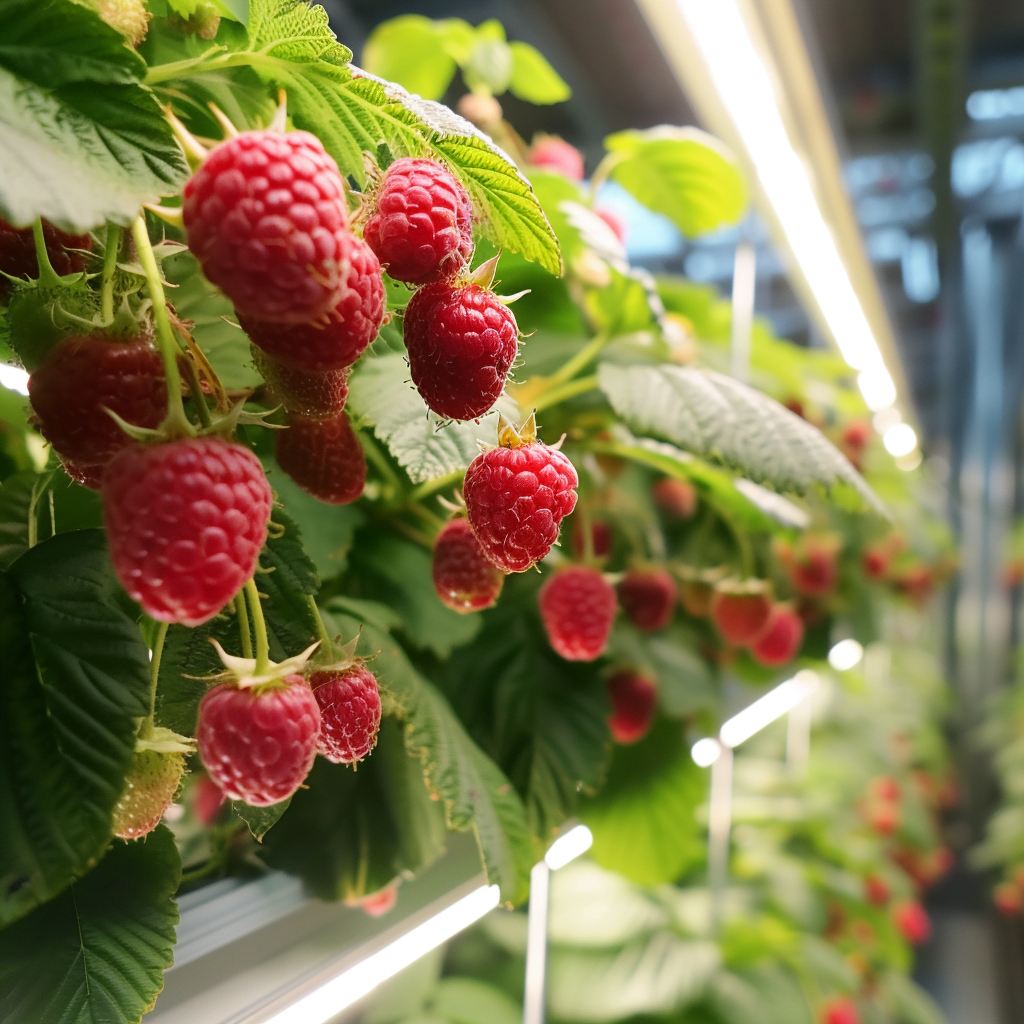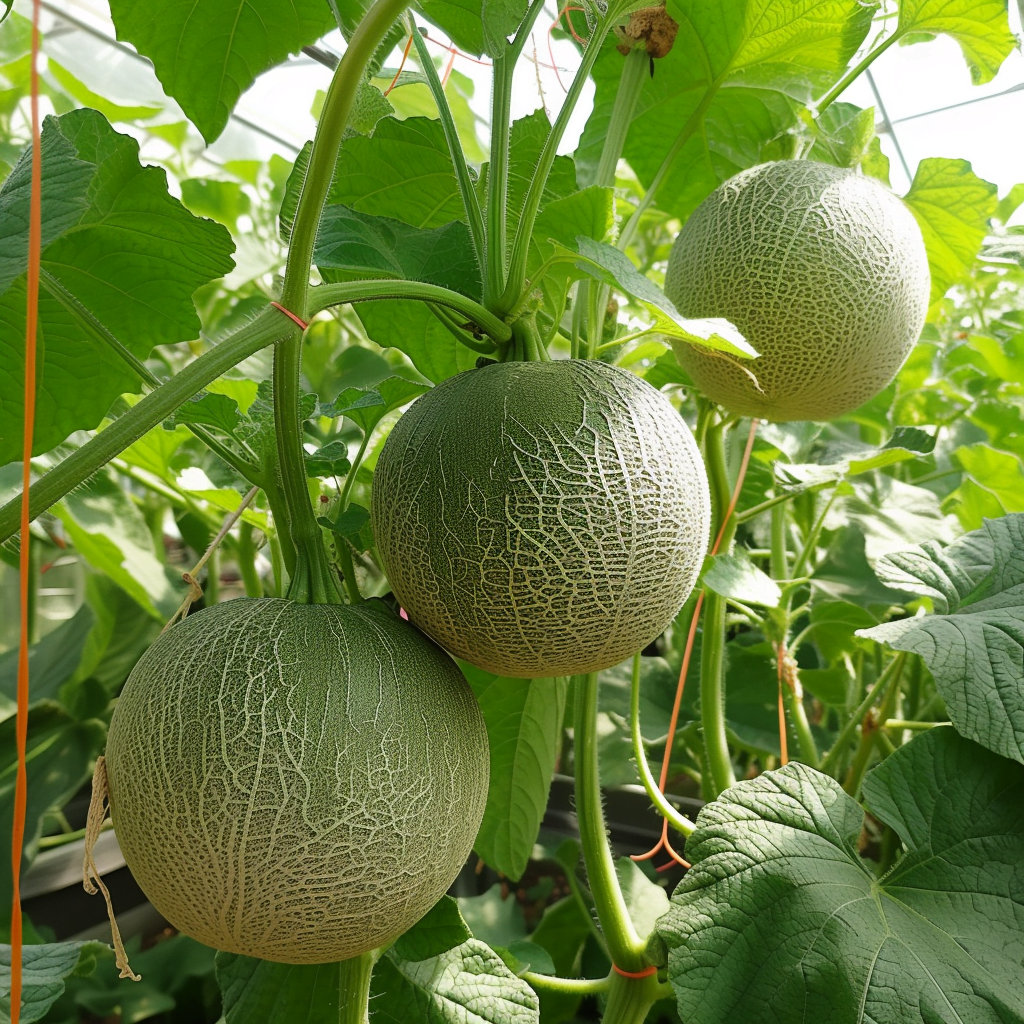Hydroponic gardening has become increasingly popular for growing fresh, flavorful produce at home without the need for large garden spaces. One fruit that may surprise some as being suitable for hydroponics is the blueberry. Although blueberries traditionally thrive in acidic soil conditions, they can also have their nutritional needs met in nutrient solutions for successful hydroponic cultivation.
Can I Grow Blueberries Hydroponically?
Yes, blueberries can be grown hydroponically! While they require some specific care regarding their acidity preferences, blueberries can adapt well to hydroponic setups. Their roots can directly access all the nutrients they need from the water solution without dealing with soil.
Some key advantages of growing blueberries hydroponically include:
- Higher yields – Without soil, the roots grow faster and have immediate access to nutrients leading to more abundant fruit production. Yields can be up to three times higher than conventional soil planting.
- Grow anywhere – Hydroponics allow growing blueberries in all environments even where traditional in-ground planting is not possible, like apartments, patios, garages, basement grow rooms, empty warehouses, etc. No outdoor garden space is needed.
- Avoid soil-borne issues – Hydroponic methods prevent many common soil fungi like phytophthora root rot as well as pests like nematodes. This leads to much healthier plants overall.
- Precise control – You can meticulously monitor the nutrient levels and acidity for optimal plant health. Make precise adjustments anytime conditions stray from the ideal.
- Extended season – Grow blueberries nearly year round with supplemental lighting and climate control indoors. Enjoy fresh homegrown berries in winter.
Challenges of Hydroponic Blueberries
While certainly possible, blueberries do present some unique challenges in hydroponic growing:
- Acidity requirements – Blueberry plants need a solution of around 4.5-5.5 pH to mimic their preferred acidic soil environment. Failing to maintain proper acidity is one of the most common reasons for poor growth.
- Sensitive roots – Their roots need gentle aeration and solution movement. Stagnant or harshly aerating conditions can damage roots. Careful monitoring is required.
- Micronutrients – Blueberries need certain micronutrients that other crops don’t. Be sure to supplement with iron, zinc, manganese, and sulfur.
- Equipment investment – At minimum a reservoir, grow lights, aeration, and a substrate system are needed. This can require an initial investment of $200-500 to get started.
- Labor needs – Closely monitoring water chemistry, pruning, and pollinating requires consistent effort. Automated systems can offset some labor.
- No instant gratification – It takes 1-3 years for plants to mature and produce full yields. Patience is key.
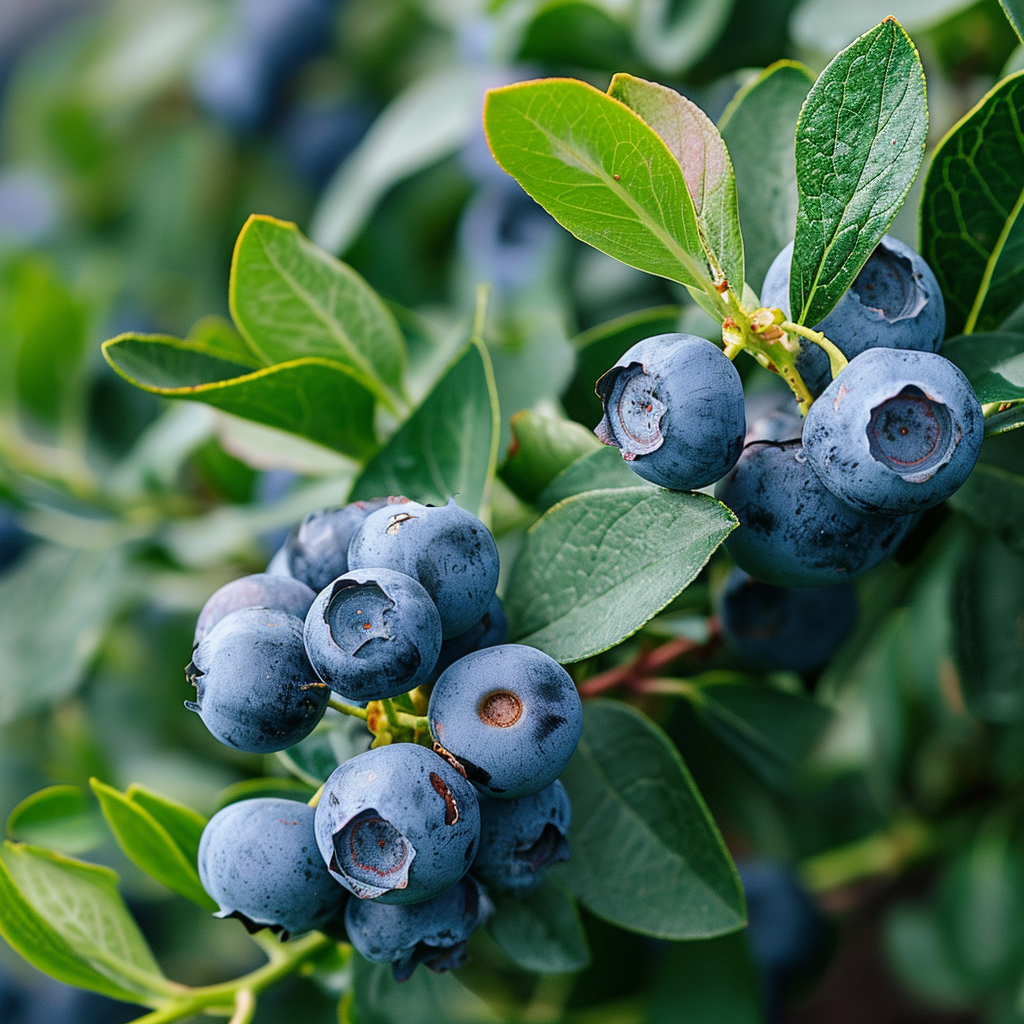
Best Blueberry Varieties for Hydroponics
When selecting blueberry varieties for hydroponics, prioritize ones bred specifically for containers as they adapt better to the conditions. Some top choices include:
- Jersey – This hardy, high yielding variety tolerates the warmer temperatures of indoor hydroponic environments. Jersey is also naturally acidic.
- Bluecrop – Extremely high yields are possible with this late season variety. Bluecrop produces big, firm pale blue berries.
- Ozarkblue – Does well in containers and highly productive. Ozarkblue is a Southern highbush type ripening in early summer.
- Sunshine Blue – One of the few varieties bred just for container planting. Ideal for patios and indoor hydro.
- Jelly Bean – A dwarf variety only growing 1-2 feet tall making it perfect for indoor systems with limited headspace.
- Peach Sorbet – This midseason berry has a unique peach flavor. It can produce for an extended harvest period.
No matter the variety, choose potted plants from a reputable nursery rather than seeds. Mature potted blueberries transplant seamlessly into hydroponic setups.
Setting Up the Hydroponic System
Many different hydroponic systems can support blueberries, each with their pros and cons. Options include:
- NFT (nutrient film technique) – Shallow channels recirculate a thin film of nutrient solution over the roots. Needs gentle flow rate for blueberry roots.
- Deep water culture – Roots grow directly in an aerated nutrient bath. Requires meticulous pH monitoring.
- Dutch bucket – A bucket or pot contains substrate like perlite or coconut coir which is irrigated from a reservoir. Handy for patio growing in individual containers.
- Drip or ebb and flow – Periodic flooding of substrate then draining allows roots to get oxygen.
- Aeroponics – Suspended roots are misted with a nutrient solution. Advanced setups only.
No matter the setup, the nutrient solution must be adjusted to a target pH around 4.5-5.5. The reservoir should provide essential macronutrients (nitrogen, phosphorus, potassium) and micronutrients (iron, zinc, calcium, magnesium, sulfur). Aeration is critical, either through an air pump and stones or frequent solution recirculation.
Popular hydroponic substrates for blueberries include perlite, coconut coir, Rockwool or clay pebbles. Choose an inert medium that won’t impact pH over time. Once fruiting, a trellis helps support heavy clusters.
For small scale growers, a Dutch bucket or drip system is likely the simplest approach. 5 gallon buckets filled with an aerated substrate work for each plant. Larger operations may use NFT channels or deep water culture for higher density planting.
Caring For Hydroponic Blueberries
Ongoing care and maintenance is required for hydroponic blueberries to thrive:
- Test and adjust pH regularly to maintain acidic conditions. Fluctuations can significantly impact growth. Target 4.5-5.5 pH.
- Top off the reservoir with fresh water as needed between solution changes to replace what the plants uptake.
- Actively prune blueberries right after harvest to prepare for next year’s crop. Remove old branches and shape for maximum yield density.
- Pollinate the flowers by hand with a soft brush or introduce bee hives if growing outdoors. Pollination is essential for fruit set.
- Provide bright lighting approximately 16 hours daily. Supplement natural sun with LED grow lights.
- Monitor closely for aphids, mites, whiteflies, and fungal issues. Catch problems early and treat organically.
- Flush the hydro system periodically to prevent nutrient salt buildup which can hinder roots. Change reservoir water every 2 weeks.
- Maintain ideal temperatures between 65°-80°F for optimal growth and fruiting.
- Water carefully to avoid bursting ripe berries right before harvesting.
Harvesting Hydroponic Blueberries
You can begin picking blueberries once the fruits turn completely blue with no hints of red remaining. Gently pick individual ripe berries by hand – don’t damage the plant structure. Harvest early in the day when berries are firmest. Use scissors for hard to reach clusters.
Remove any damaged or spoiled berries promptly as they can rot the rest of the cluster. Promptly store harvested berries refrigerated. Enjoy fresh or preserve bountiful yields by freezing, drying, or canning.
Table for expected harvest times for common varieties:
| Variety | Ripening Time |
|-|-|-|
| Jersey | Early-Mid Season |
| Bluecrop | Mid-Late Season |
| Ozarkblue | Early Season |
| Sunshine Blue | Mid Season |
| Jelly Bean | Mid Season |
| Peach Sorbet | Mid Season |
With optimal hydroponic cultivation, each mature bush can produce 5-10 pounds of berries per year once established.
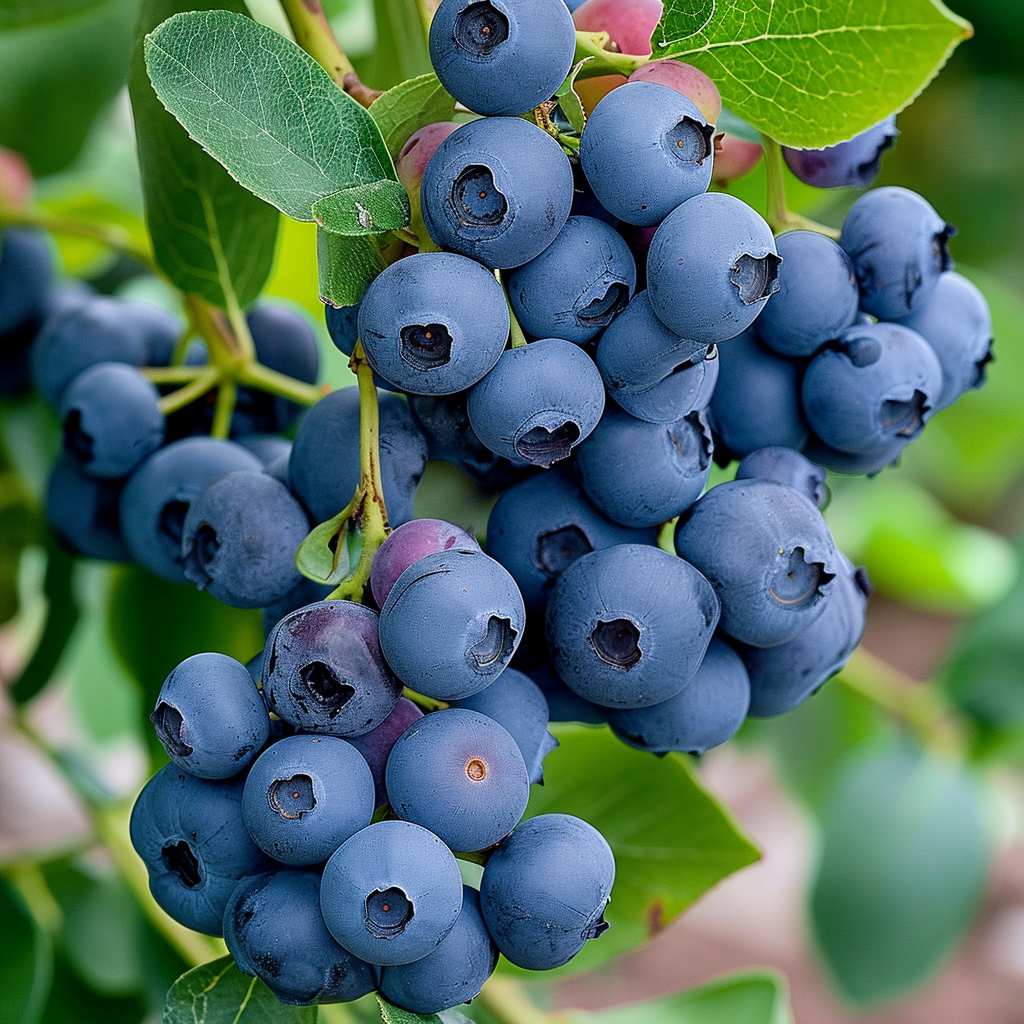
Growing Indoors vs Outdoors
Blueberries grown hydroponically can thrive either indoors or outdoors:
Indoors
- Precise climate control for year-round growth
- Sheltered from adverse weather
- Maximize vertical space with tiered setups
- Supplemental LED lighting required
Outdoors
- More space for larger systems
- Natural sunlight
- Can utilize passive greenhouse heating
- Can incorporate bees for pollination
- Subject to changing weather
If growing indoors, containers like 5 gallon buckets work well for dwarf varieties under lights. Outdoors, Dutch bucket systems or larger NFT setups are popular in greenhouses.
Troubleshooting Common Hydroponic Blueberry Problems
Even with ideal setups, issues can arise. Watch for these common problems:
- Slow growth – Often caused by pH being too high. Maintain 4.5-5.5 range.
- Yellowing leaves – Usually a nutrient deficiency. Check levels and adjust.
- Wilting – Roots may be damaged from lack of oxygen. Improve aeration.
- Failure to fruit – Requires pollination. Hand pollinate or add bees.
Selecting the Best Blueberry Varieties
With new blueberry varieties constantly being developed, there are many options to choose from. Consider these factors when selecting plants:
- Chill hours – The amount of cold temperatures needed to set fruit buds. Low chill varieties like O’Neal do better in warmer climates.
- Harvest season – Pick early, mid and late season types like Duke, Bluecrop and Elliott to extend harvests.
- Heat tolerance – Important if growing outdoors in hot climates. Look for Southern highbush varieties.
- Fruit characteristics – Size, flavor, firmness, and potential uses. Jersey produces smaller, tangy berries perfect for baking.
- Disease resistance – Look for built-in resistance to common problems like mummyberry virus.
- Plant size – Compact dwarf varieties work well for indoor systems.
Don’t be afraid to experiment with multiple varieties to find your favorites for flavor and performance.
Creating the Ideal Hydroponic Nutrient Solution
The nutrient solution provides everything the plants need to thrive. It must contain:
- Macronutrients – Nitrogen, phosphorus, potassium, calcium, magnesium and sulfur in appropriate ratios.
- Micronutrients – Iron, boron, zinc, manganese, copper and molybdenum. Blues love iron!
- Complete formulas – Use a ready made hydroponic nutrient or follow a recipe designed for blueberries.
- Acidity buffers – Phosphoric acid or citric acid help maintain optimal pH levels.
- Oxygen – Use air stones/pumps to maintain dissolved oxygen for healthy roots.
- Water – Start with clean, pH neutral water without chlorine or chloramines.
Monitor the nutrient solution frequently and change it out every 7-14 days depending on the size of the system and plant growth rate.
Mastering Acidity Levels
Perhaps the most important factor for success with hydroponic blueberries is dialing in the perfect pH range. Target 4.5-5.5pH for optimal growth. Here are some tips:
- Use a digital pH probe for frequent monitoring and accuracy.
- Lower pH with phosphoric, nitric or citric acid. Raise with potassium carbonate if too low.
- Only make small pH adjustments at a time, like 0.1-0.2 at once.
- Check that your water source doesn’t influence pH over time.
- Let solution circulate and retest pH after each adjustment.
- Create separate reservoirs if growing multiple crop types with different pH needs.
Maintaining proper acidity takes diligence but your plants will thank you with vigorous growth and abundant fruit.
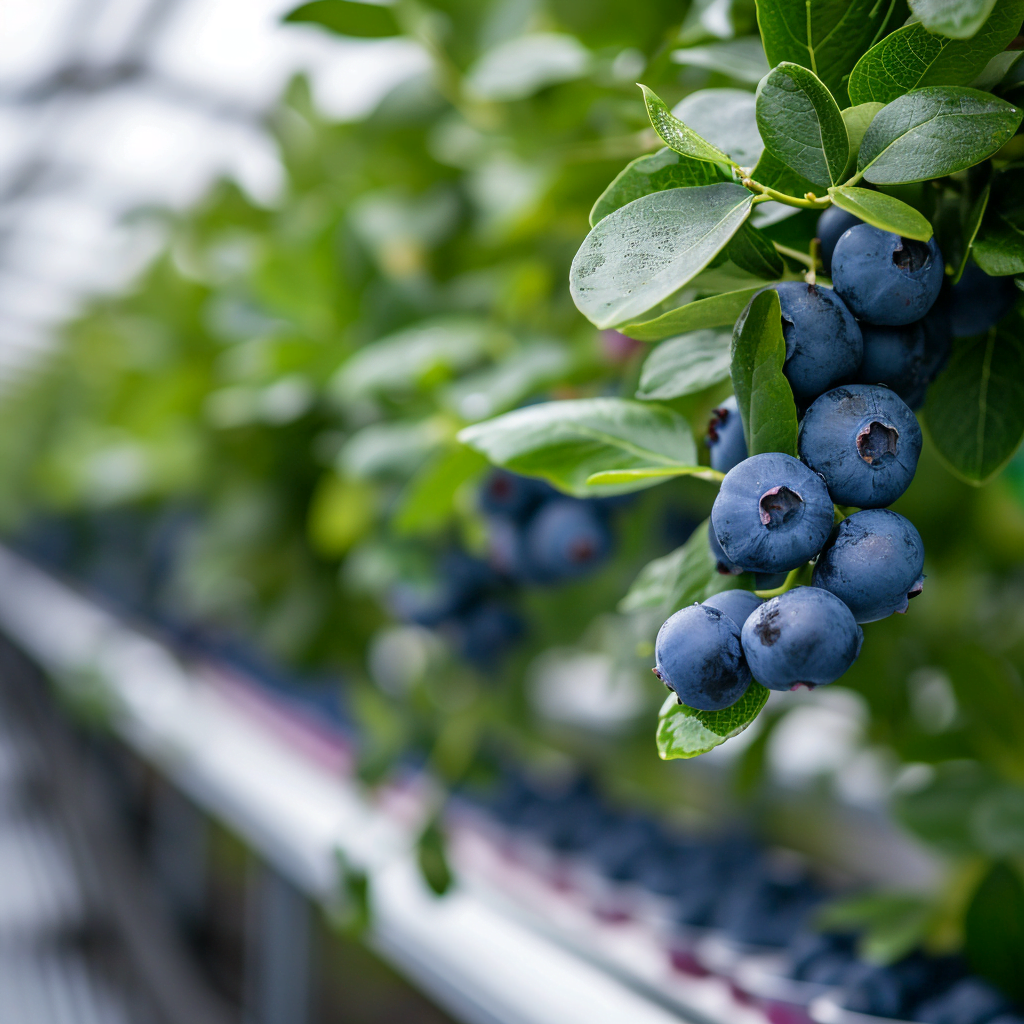
Economical Lighting Options
Providing sufficient light is crucial, whether growing indoors or supplementing outdoors. LED grow lights are the most energy efficient choice.
For small systems, affordable options include:
- LED grow bulbs in standard light sockets
- LED shop lights hung over plants
- Flexible LED light strips fixed under shelves
- Clamp on gooseneck LED lamps to spotlight each plant
Outdoors, extend natural light with hanging LED arrays in a greenhouse or under a patio cover. Put lights on a timer for 16-18 hours of daily light.
Automating Hydroponic Blueberry Systems
Manual maintenance of hydroponics can be time consuming. Consider automating:
- pH monitoring with controllers that automatically adjust acidity
- Dosing pumps to replenish nutrient solution
- Float valves maintain consistent water levels
- Submersible heaters and chillers for temperature control
- Humidity and ventilation regulation
- Smart sensors to provide data and alerts to your mobile device
Automated systems require an investment but allow remote monitoring and less daily labor.
Enjoying the Fruits of Your Labor
Once your hydroponic blueberry plants hit their stride, be prepared for prolific fruit! Beyond eating berries fresh, you can:
- Freeze extra berries for year-round nutrition and smoothies
- Make jams, jellies, syrups, and sauces
- Dehydrate berries into homemade fruit leathers or snacks
- Mix blueberries into baked goods like muffins, pies and pancakes
- Brew batches of blueberry wine or kombucha
- Whip up homemade skin care products using berry extracts
Growing your own hydroponic blueberries unlocks this versatile fruit for many uses. The possibilities are endless!
Conclusion
Growing juicy, flavorful blueberries hydroponically is a rewarding gardening endeavor. With the right system, variety, and care regimen, backyard gardeners can reap abundant fruit without an in-ground garden. Be prepared for the initial investment in equipment, as well as maintaining ideal conditions like acidity and nutrients. But the payoff of fresh homegrown berries is well worth it!
